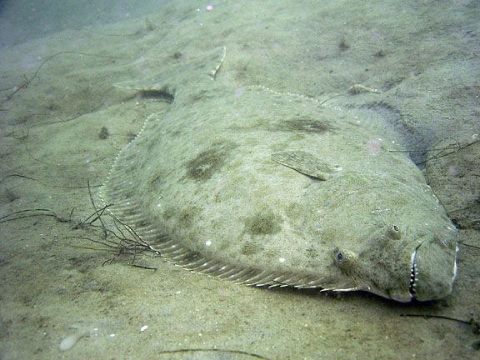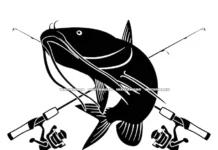The Flounder Rebound
By Neil Taylor, Strike Three Kayak Fishing


I have been fascinated with flounder from a very young age. Most do not consider them to be one of the alluring species to target. A fish with eyes on the same side of its head, blending in with the sandy bottom of the ocean floor and one of the very best to harvest for a variety of incredible fish meals- the flounder is interesting quarry. What made the allure more of an obsession was how challenging it was to catch them. I can remember fishing the waters around Panama City and Port St Joe having flounder clinging on to a bait “but not quite hooked.” That added to the fun of this “game.” Decades later, I made flounder my target again but in a different region of Florida. Over time, I developed a solid game plan for intercepting and catching flounder around Tampa Bay area.
Red tide outbreaks in 2005 and 2006 clobbered the flounder population in much of the Gulf coast of west central Florida. About a year ago, this species returned as a semi-regular “accidental catch.” The ecosystem slowly rebounding from the harmful algae bloom, I hoped that they would return to prominence. This Fall, flounder once again became a species that can be expected to be caught when targeted.
Targeting and catching flounder in inshore waters is just like approaching other goals: The right place, the right time, the right equipment and good technique. Flounder stack up in specific areas just like other species are prone to a territoriality life. The passes that connect inshore waters to the Gulf of Mexico are general areas where one might expect to find them. Bridges and docks are another location to prospect for flounder. They won’t always lie in the center of the bridges or passes, but will almost always be on the “breaks.” Areas where rocks meet sand, grass meets sand or oyster bars touch the sand are where they are most likely to lie in wait for a meal. The common denominator is the sand. Positioned flat on the sand, the pattern of their skin allows them to lay undetected by the food sources they attack. Being near the other structures, they are rewarded for picking that location by the baitfish that congregate on or around those structures. Some of the very best flounder grounds are well away from the passes. Large sand and sand/shell mixed patches in the center of vast seagrass beds will hold great numbers of “flatties.” Depth is a consideration. Your best odds at catching more flounder will be in areas that are 3-feet or deeper on the grassflats. Around the passes and bridges their “depth location” may vary.
Tackling up for flounder is very simple. Take any rod and reel combination that you like to use and tie on a two to three-foot length of 20-pound fluorocarbon leader. On the other end of the leader attach a one-quarter ounce jighead and your favorite plastic tail. I usually use the 3-inch 12 Fathom Fat Sam Mullet. If I see larger baits in the area, I may switch to the 5 or 6-inch SlamR.


The 12 Fathom 3 Inch Fat Sam Mullet: GoldDLuxe, a flounder favorite!
Even with the sharpest of hooks, flounder will often spit out the jig at the surface when they are being boated or landed. “Exclusively” flounder trips would be the only time I would consider taking a landing net. Getting the fish into possession as quickly as possible is the key and often the fish will come off the jig and drop into the net if you have it ready to quickly get under a fish brought to the surface.
The error that is made when targeting flounder is location of the lure. Keeping the lure very close, or in contact with, the sea floor is critical. In clear water conditions, one can see flounder chasing lures, usually staying against the bottom during pursuit. The strike of the flounder is somewhat different than that of other species. The lure will be traveling along and it will come to a “dead stop” almost as if the lure has fouled on some kind of structure, like seagrass or a rock. Lift the rod tip smoothly up to a higher position and keep tension on the fish as it feels the resistance from the fishing rod and begins to slowly “slide” along the bottom. This will usually hook the fish but if you feel the fish let go, drop the rod tip and let the lure “flutter” back down to the fish. That fish (or another one) will often strike that lure multiple times. Another distinct characteristic of the species: Flounder dig in and try to hug the bottom when they are hooked. Clients are fascinated when I correctly predict, “flounder” just by how I see what is happening during the battle.
There are days when flounder feed aggressively. There are other times when they will lethargically tap lures but don’t seem to take them in far enough to get hooked. There are many variables, and sometimes “putting in your time” pays off. Flounder may go from a long period of tapping of lures to inhaling them. With years of field-testing and experience, and all things held constant: Overcast days produce the very best flounder catching.
With any luck, algae blooms will not be part of the summertime pattern anytime soon and flounder will continue to rebound in “numbers” and increase in size. Join the obsession and see if you can successfully target a tasty flatfish!
Neil Taylor
www.strikethreekayakfishing.com
Livelybaits@aol.com
727-692-6345
- The Neil Blog… - July 26, 2023
- The Catfish - July 26, 2023
- update - July 22, 2023












